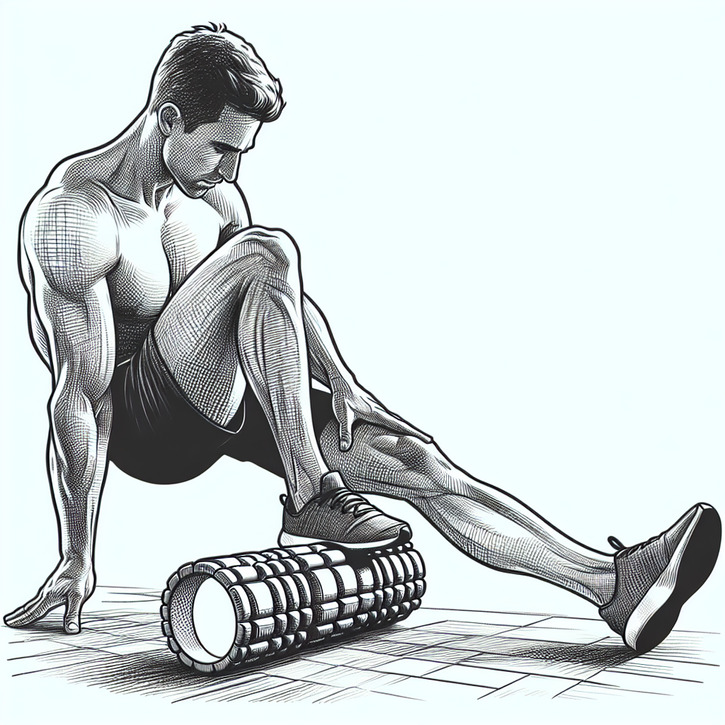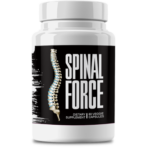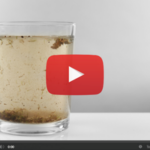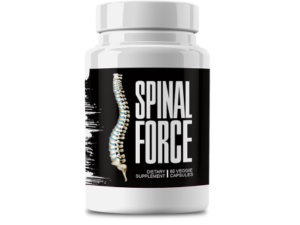This Village-Made Chinese Pain Reliever Eliminates Back And Joint Pain!
Top 10 Patellofemoral Pain Syndrome Treatments to End Knee Pain

An Easy Guide to Patellofemoral Pain Syndrome Treatments
So, What Exactly Is Patellofemoral Pain Syndrome?
You've probably heard it called “runner’s knee” – that's patellofemoral pain syndrome in a nutshell. It’s more than just a little discomfort; it usually happens when the kneecap isn't moving quite right over the thigh bone, often thanks to muscle imbalances or misalignment. This can turn everyday tasks—like going up stairs or sitting for too long—into real challenges. It turns out that the pain isn’t just from aging or wear and tear; it’s often tied to overuse, muscle imbalances, or biomechanical quirks. The good news? By getting to the root of these problems, you can start easing that knee pain.
Why Targeted Treatments Are a Game-Changer
When it comes to treating patellofemoral pain, addressing just the symptoms usually just isn’t enough. Instead, treatments that dig into the underlying causes tend to work best. Think of it as a personalized game plan that might include physical therapy, smart pain management strategies, and even some advanced options if needed. Each approach is designed to tackle issues like muscle imbalances or misalignment head-on, offering you relief while rebuilding strength and stability in your knee. It’s all about a tailored approach that meets your unique needs and paves the way for long-term recovery.
A Quick Look at the Top 10 Treatments
We’ve put together a list of the top 10 treatment strategies to help you kick knee pain to the curb. This list spans from basic medical evaluations and conservative steps, like physical therapy and tweaking your daily activities, to more advanced options such as regenerative techniques and, in some cases, surgical interventions. Each treatment comes with its own set of benefits based on your specific diagnosis and the severity of your condition. Our aim is to break down these options for you, giving you the insight needed to decide which route might be best for your situation.
The Role of a Medical Evaluation in Treatment
Thorough Assessments for Your Knee
Before jumping into any treatment plan, a comprehensive evaluation is essential. Healthcare experts will review your medical history, conduct a physical exam, and run a few tests to figure out what’s really going on with your knee. These assessments can reveal weaknesses, misalignments, or overuse injuries that might be causing those nagging symptoms. With a solid baseline in hand, professionals can craft a treatment plan that’s both clever and safe. This initial deep dive is key for pinpointing the right patellofemoral pain syndrome treatments just for you.
Using Diagnostic Imaging and Physical Tests
To get a clearer picture of your knee’s health, doctors often use diagnostic imaging techniques—think X-rays, MRIs, or ultrasounds—alongside hands-on physical tests. These tools help spot any alignment issues with the kneecap or problems with the surrounding tissues like cartilage and ligaments. The detailed images can uncover subtle issues that might be fueling your pain. When mixed with physical tests, these findings help create a treatment strategy that’s both targeted and effective, addressing both the structure and function of your knee.
Conservative Approaches to Patellofemoral Pain
How Physical Therapy and Strengthening Exercises Help
Physical therapy usually tops the list as a go-to conservative treatment for patellofemoral pain syndrome. A well-designed program can help correct muscle imbalances and bolster the muscles that support your knee. Therapists tailor these regimens to your unique needs, often incorporating a mix of stretching, resistance exercises, and balance drills. These moves do double duty by easing current discomfort while also putting you on the path to better biomechanics and long-term knee stability.
Smart Activity Modifications and the Importance of Rest
Sometimes, just tweaking your daily routine can make a huge difference. Switching out high-impact activities for lower-impact alternatives—like opting for indoor cycling instead of running or taking regular breaks if you’re sitting for long periods—can really help reduce irritation. Giving your knee the rest it needs allows inflammation to go down and paves the way for healing. Pacing yourself and gradually reintroducing tougher activities is key. While these changes can seem small, they play an important role in easing pain over time.
Managing Pain Without Invasive Measures
Alongside physical therapy, non-invasive methods like ice, heat, and even over-the-counter pain relievers are part of many treatment plans. These approaches help calm inflammation and provide temporary relief, making it easier for you to get on with your rehabilitation. Many practitioners also recommend gentle stretching and mindfulness techniques to complement these methods. While they’re not a cure-all on their own, these strategies are a valuable part of the overall plan—helping you manage pain and keep moving more comfortably as you work toward recovery.
Injection-Based Treatment Options
Understanding Corticosteroid Injections
When conservative measures don’t cut it, corticosteroid injections might be the next step. These injections deliver powerful anti-inflammatory medication right into the knee joint, which can help dial down inflammation and ease pain pretty quickly. The process is minimally invasive and often brings relief for several weeks or, in some cases, even months. Though they’re not a permanent fix, corticosteroid injections can bridge the gap until you move on to other, more definitive treatments. It’s always important to discuss potential benefits and side effects with your doctor to see if this option makes sense for you.
Boosting Joint Health with Hyaluronic Acid Injections
Another interesting injection-based option involves hyaluronic acid, a substance that acts as a natural lubricant in the knee. By injecting it into the joint, many patients experience improved mobility and reduced friction between the knee surfaces. Typically, patients notice a gradual reduction in pain and better overall knee function after a series of these injections. While not every case responds the same way, hyaluronic acid is praised for helping support natural joint recovery. As always, have a candid chat with your healthcare provider about whether this treatment fits into your overall strategy.
Taking It Up a Notch with Advanced Treatments
Exploring Regenerative Medicine Solutions
Regenerative medicine is really shaking things up when it comes to treating patellofemoral pain syndrome. By harnessing your body’s own healing powers, techniques like platelet-rich plasma (PRP) injections and stem cell treatments aim to repair and regenerate damaged tissues in the knee. Even though these methods are still relatively new, they show a lot of promise, especially for those who haven’t found lasting relief with more traditional treatments. The idea is to fix the underlying issues rather than just masking the pain, and ongoing research is making this a very exciting area in the field.
How Shockwave and Ultrasound Therapies Come Into Play
Advanced options like shockwave and ultrasound therapy are becoming increasingly popular in the fight against chronic knee pain. Shockwave therapy uses sound waves to boost blood flow and kickstart healing, while ultrasound therapy helps break down scar tissue and encourages tissue regeneration. These techniques can work on their own or be paired with other treatments and have helped many patients reduce pain and improve joint function—with minimal downtime. Their rising popularity highlights our ever-evolving approach to managing knee pain.
Keeping an Eye on Emerging Research and New Techniques
Research in this area is bustling with innovation. New techniques that blend traditional exercise with high-tech interventions—like biofeedback and neural modulation—are on the horizon. Although these cutting-edge approaches are still in their early stages, initial results are promising, particularly for those who haven’t found success with conventional methods. Rather than replacing your current plan, these novel strategies could soon serve as valuable additions to your treatment toolkit. The future of patellofemoral pain syndrome treatments looks increasingly personalized, combining safety and real effectiveness.
When Surgery Might Be on the Table
Figuring Out When Surgery Is the Right Move
Surgery is usually the last resort when other patellofemoral pain syndrome treatments haven’t provided enough relief. If your pain persists despite trying conservative and advanced options—and if issues like recurring instability or significant misalignment are present—a surgical evaluation might be necessary. This decision is made carefully, with a frank conversation between you and an orthopedic specialist who understands knee issues inside and out. They’ll walk through the potential benefits and risks with you, ensuring that surgery is only considered when absolutely essential, and paired with a solid post-op rehabilitation plan.
A Closer Look at Arthroscopic Procedures
One popular surgical option is arthroscopy, a minimally invasive procedure that uses tiny incisions to insert a small camera and specialized tools into your knee. This technique allows surgeons to diagnose and fix problems like cartilage damage, ligament issues, or kneecap misalignments. One major perk of arthroscopic surgery is a quicker recovery time compared to open surgery, meaning less pain after the procedure and a faster return to your daily routine. While surgery isn’t for everyone, arthroscopic methods have shown great results for cases where knee issues are more complex.
The Road to Recovery After Surgery
Getting back on your feet after surgery involves a comprehensive rehabilitation program. It’s all about ensuring that your knee heals properly while regaining full functionality. Typically, this involves a mix of physical therapy, gradual strength building, and mobility exercises tailored to your pace of recovery. It might take some time and a good deal of patience, but sticking closely to your rehabilitation plan can really cut down on the risk of re-injury and help you return to your everyday activities with confidence.
Making Lifestyle Adjustments for Better Knee Health
Why Diet and Weight Management Matter
Lifestyle tweaks often play an underrated role in treating patellofemoral pain syndrome. Keeping a healthy weight reduces the stress on your knees, while a balanced diet packed with the right nutrients can fight inflammation and support overall joint health. Even small changes in your daily eating habits can lead to noticeable improvements in how you feel. Combine these changes with regular, gentle exercise and proper hydration, and you’re setting up a solid foundation for lasting recovery.
The Benefits of Home-Based Exercise Programs
Finally, don't underestimate the power of a good home exercise routine. Tailored to your specific needs, these low-impact exercises can help strengthen the muscles around your knee without putting too much stress on the joint. Whether it’s stretching, using resistance bands, or working on your balance, these routines are easy to follow at home. Plus, the convenience of exercising in your own space often makes it easier to stick with a regimen, especially when combined with occasional check-ins from your healthcare provider.
At the end of the day, there isn’t a one-size-fits-all answer to managing patellofemoral pain syndrome. From the initial evaluations to the variety of treatments available—whether conservative, injection-based, advanced, or even surgical—the key is crafting a plan that suits your unique situation and lifestyle. Whether you’re just starting out on this journey or have been managing knee pain for a while, staying informed about the latest treatment options can empower you to take charge of your health. Always be sure to consult with a knowledgeable professional to create a personalized approach that works best for you.








